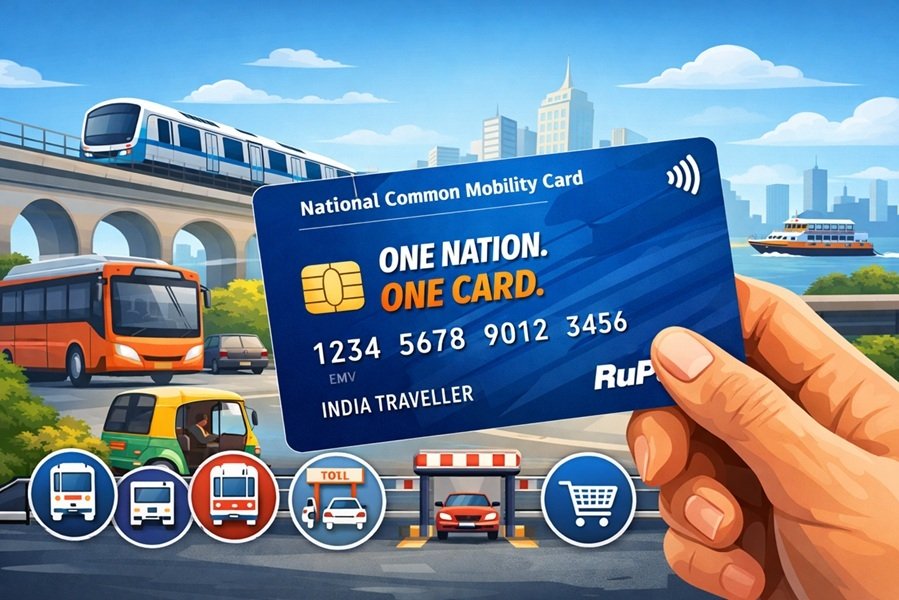
Uttar Pradesh, often abbreviated as UP, is the most populous and one of the most culturally rich states in India. Located in the northern part of the country, it serves as a microcosm of India with its vast diversity in culture, language, geography, and traditions. The state holds a unique position in the socio-political and economic landscape of India. With over 240 million residents as per the latest estimates, Uttar Pradesh not only leads the country in terms of population but also plays a pivotal role in shaping the nation’s history, politics, economy, and culture.
In this comprehensive article, we explore the geography, demographics, and the strategic significance of Uttar Pradesh in the Indian Union.
Geographic Overview of Uttar Pradesh
Uttar Pradesh is strategically located in the Indo-Gangetic Plain, which is one of the most fertile and agriculturally productive regions in the world. The state is bordered by Nepal in the north, and the Indian states of Uttarakhand and Himachal Pradesh to the northwest, Haryana, Delhi and Rajasthan to the west, Madhya Pradesh to the south, Chhattisgarh and Jharkhand to the southeast, and Bihar to the east.
Read this: Uttar Pradesh State Flower Palash (Butea monosperma): Tesoo
Area and Topography
Covering an area of approximately 243,290 square kilometers, Uttar Pradesh is the fourth-largest state in India in terms of area. The state can be divided into three distinct geographic regions:
- The Himalayan Region in the North: This includes districts like Pithoragarh and Chamoli, and features hilly terrain and forested areas. Though most of the hilly terrain became part of Uttarakhand after the state’s bifurcation in 2000, some parts still remain within UP.
- The Gangetic Plain: This is the most extensive and agriculturally important region, enriched by the rivers Ganga, Yamuna, Ghaghara, and their tributaries. The soil is alluvial, supporting a wide variety of crops like wheat, rice, sugarcane, and pulses.
- The Vindhya Region and Plateau in the South: This region is comparatively drier, rocky, and less fertile but rich in minerals and forest resources.
Climate
Uttar Pradesh experiences a humid subtropical climate, with hot summers, a rainy monsoon season, and cool winters. Temperatures can range from 0°C in winter to over 45°C in summer. The monsoon season usually lasts from June to September, with average rainfall varying across different parts of the state.
Read this: Pilibhit: India’s Secret Tiger Haven You Need to See!
Demographics of Uttar Pradesh
Population
According to recent projections, Uttar Pradesh has a population exceeding 240 million, making it more populous than several countries, including Brazil and Pakistan. This immense population presents both opportunities and challenges for the state.
Urban vs Rural
Approximately 78% of the population lives in rural areas, while the remaining 22% reside in urban centers. Major urban hubs include Lucknow (the capital), Kanpur, Varanasi, Agra, Meerut, and Noida. Rural areas primarily depend on agriculture, while urban centers are hubs of commerce, industry, and administration.
Language and Religion
- Languages: The official language is Hindi, and Urdu holds the status of a second official language in some districts. Other widely spoken dialects and languages include Awadhi, Bhojpuri, Braj, and Kannauji.
- Religion: The state has a diverse religious landscape. According to the 2011 Census:
- Hindus constitute about 79.7% of the population.
- Muslims make up around 19.3%.
- Other religions, including Sikhs, Christians, Jains, and Buddhists, account for less than 2% collectively.
Literacy and Education
The literacy rate in Uttar Pradesh is around 73%, with notable disparities between urban and rural areas, and between male and female literacy. The government has implemented various programs to improve educational outcomes, including the Sarva Shiksha Abhiyan and mid-day meal schemes.
Workforce and Employment
A significant portion of the population is engaged in agriculture. However, there is a growing trend of migration towards cities and towns in search of better employment opportunities. The state also has a large informal sector, and several labor-intensive industries such as textiles, handicrafts, leather, and sugar are major sources of employment.
Strategic Significance of Uttar Pradesh in India
Political Influence
Uttar Pradesh holds unparalleled importance in the political framework of India:
- Largest Number of Lok Sabha Seats: The state sends 80 members to the Lok Sabha, the highest among all states.
- Prime Ministers: Several of India’s Prime Ministers, including Jawaharlal Nehru, Indira Gandhi, Atal Bihari Vajpayee, and Narendra Modi (who currently represents Varanasi), have had strong ties to Uttar Pradesh.
- State Politics: The state has been a political battleground for major national parties like the Bharatiya Janata Party (BJP), Indian National Congress (INC), Samajwadi Party (SP), and Bahujan Samaj Party (BSP).
Cultural Importance
Uttar Pradesh is a cradle of Indian civilization:
- Birthplace of Religions: Cities like Varanasi and Ayodhya are among the most sacred for Hindus. Sarnath is where Lord Buddha gave his first sermon.
- Festivals: From Kumbh Mela (the world’s largest religious gathering) to Ram Navami, Diwali, and Eid, the state’s cultural calendar is vibrant and diverse.
- Languages and Literature: Hindi literature has flourished here, producing luminaries like Tulsidas, Kabir, Premchand, and Harivansh Rai Bachchan.
Economic Contributions
While Uttar Pradesh is often criticized for lagging behind in industrial development, it plays a crucial role in India’s economy:
- Agriculture: UP is one of the top producers of wheat, rice, sugarcane, and potatoes.
- Manufacturing: Kanpur is known for leather goods, Moradabad for brass work, and Varanasi for silk weaving.
- Tourism: Home to the Taj Mahal, Uttar Pradesh attracts millions of domestic and international tourists each year.
Educational and Religious Tourism
- Educational Hubs: Institutions like Banaras Hindu University (BHU) and Aligarh Muslim University (AMU) are among India’s premier educational institutions.
- Pilgrimage Circuits: The state is part of key pilgrimage circuits like Ramayana Circuit, Krishna Circuit, and Buddhist Circuit.
Challenges and Opportunities
Despite its cultural wealth and strategic importance, Uttar Pradesh faces several challenges:
- Population Pressure: The sheer size of the population strains resources, infrastructure, and services.
- Poverty and Unemployment: High levels of poverty and underemployment persist, especially in rural areas.
- Healthcare Access: The state continues to struggle with healthcare indicators like infant mortality, maternal health, and sanitation.
- Infrastructure: Rapid urbanization has necessitated better roads, railways, and housing, but progress is uneven.
On the flip side, Uttar Pradesh offers tremendous potential:
- Youth Population: With a young demographic, the state can reap a demographic dividend.
- Industrial Corridors: Projects like the UP Defence Corridor, Jewar International Airport, and Eastern Peripheral Expressway are expected to boost development.
- Digital Initiatives: Programs like Digital India, Startup Yatra, and Skill India are being actively promoted in UP.
Read this: Comprehensive Guide to All Districts of Uttar Pradesh
Conclusion
Uttar Pradesh is not just a state; it is a civilization in itself. With a rich tapestry of history, culture, and diversity, it continues to influence India’s narrative at multiple levels. While challenges remain, the state is poised for transformation with the right mix of policy, leadership, and citizen participation. As the most populous and one of the most historically significant states, Uttar Pradesh truly embodies the soul of India.
Stay tuned as we continue this series, diving next into the ancient history of Uttar Pradesh and its role in shaping Indian civilization.






